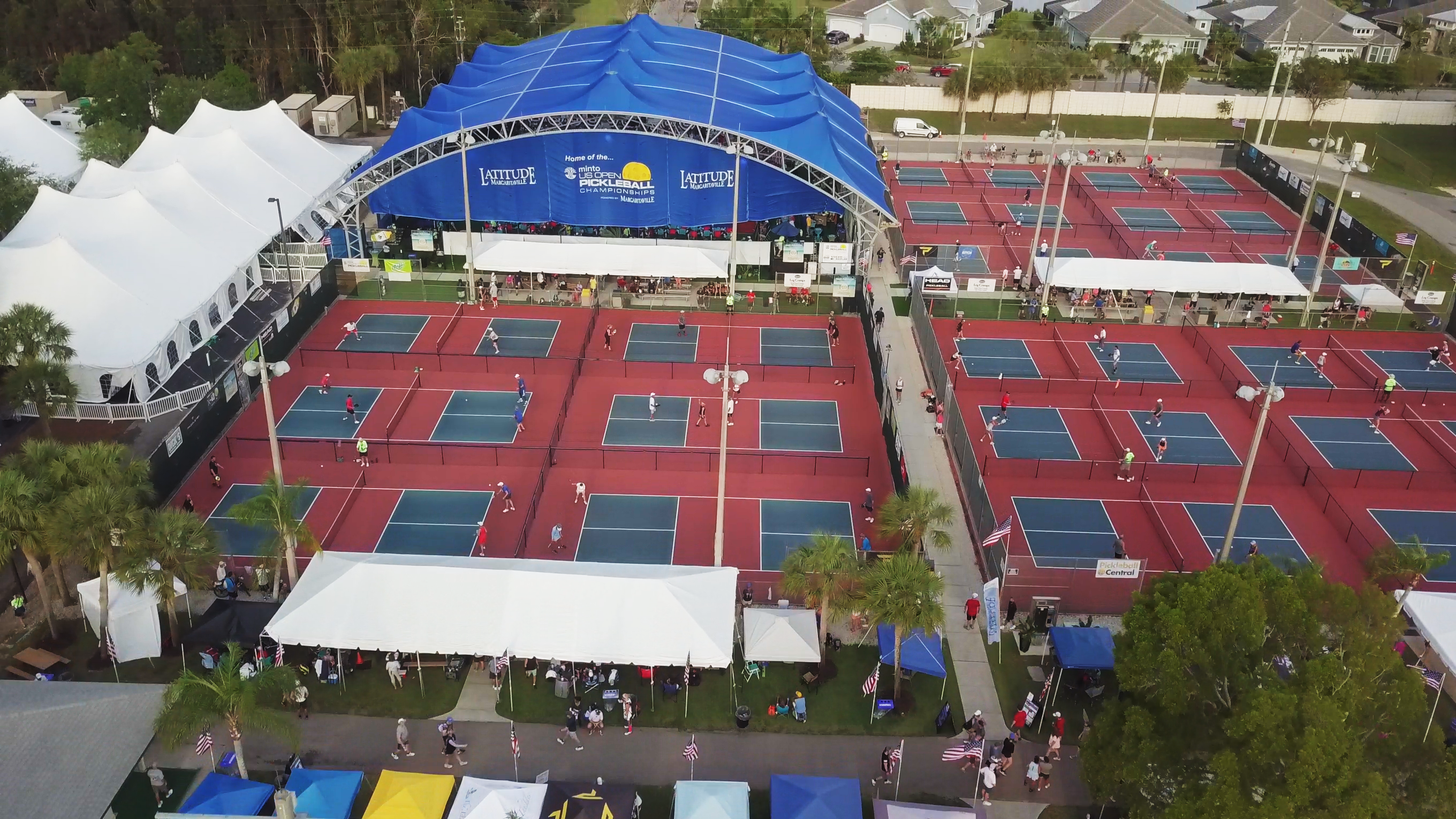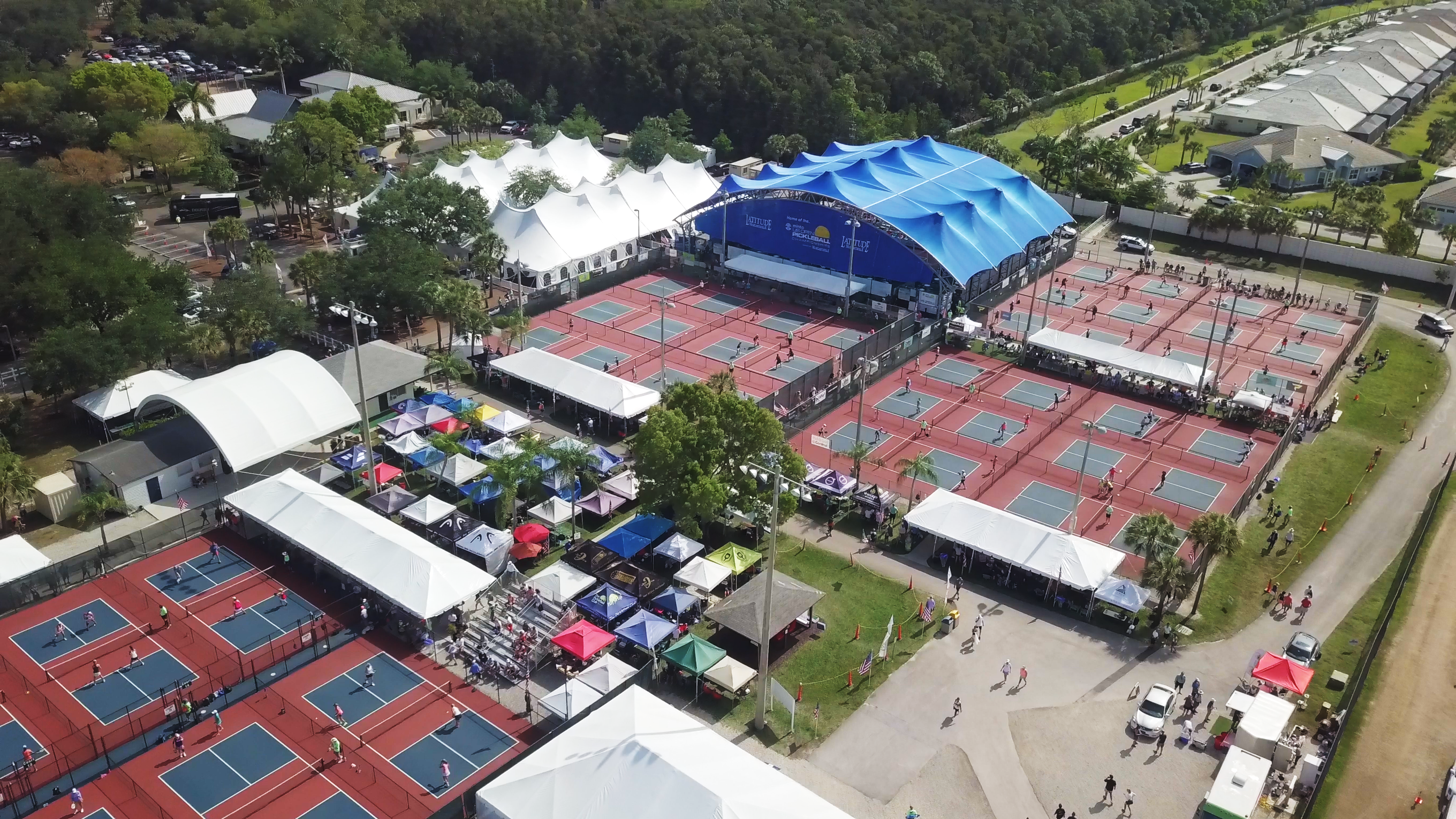Image courtesy of Minto US OPEN Pickleball Championships Powered by Margaritaville
By
Pickleball, the unstoppable sports juggernaut, has it all: it is fun, social, trending, and the focus of frenzied media attention from every direction.
But is there a tipping point for all this growth? After all, racquetball flourished in the 1980s, then dropped off the radar. What makes organizers think pickleball won’t lose its way as well?
At a recent industry conference, Carl Schmits, Managing Director of the USA Pickleball Association gave a presentation entitled, “Why 2024 Won’t Be Like 1984: Enabling the Boom, Eliminating the Bust.” And while 1984 was a distinct Orwellian reference, it was also the point at which racquetball began to decline.
Schmits gets no pleasure out of that fact.
“Racquetball is near and dear to my heart. So is tennis, for that matter. But racquetball, which had at one time been very visible, is now difficult for clubs to maintain from a business standpoint. I would say there are some key differences in pickleball that create the potential for sustainable growth.”

Image courtesy of Minto US OPEN Pickleball Championships Powered by Margaritaville
Two people who agree are Terri Graham and Chris Evon. Both women worked in the racquetball division of Wilson Sporting Goods. Both played racquetball competitively. In 2015, they left Wilson to create the wildly popular Minto US OPEN Pickleball Championships in Naples, Florida.
Schmits, Evon, and Graham lay out the essential differences between racquetball and pickleball, noting it is these factors that will drive the sport’s long-term survival:
Parks nationwide have courts players can access free of charge. Additionally, pop-up nets can be purchased everywhere from big-box stores to online retailers, making it possible to turn almost any space into a pickleball court.
“With racquetball, you have to join a club to play on their courts,” says Evon. “Younger people might have been introduced to racquetball in college but when they graduate, they aren’t making enough money to buy a club membership. They want something they can do inexpensively.”
USA Pickleball has a database of pickleball courts (defined as anything from dedicated multi-court facilities to rec centers with the floors lined for play), and visitors to the website can find facilities in their area and access this information free of charge. USA Pickleball notes that on average, over 100 new locations are added each month to a database, called Places 2 Play.
While it is possible to spend upwards of $200 on a high-end paddle, entry-level equipment is available for less than $20 (without ever needing costly restringing). Balls are inexpensive as well and can be used for months at a time.
Racquetball, with its fast pace of play, was intimidating to beginners and most could not take it up without instruction. With its lighter ball and slower game, pickleball is user-friendly.
“You can be brand-new to the sport and have a rally going inside 30 minutes,” Schmits says.
The sport also attracts experienced players from tennis and, yes, racquetball, who want to continue using their skills – without the wear and tear on their joints.
Another equally strong selling point is the game’s social, welcoming vibe. Pickleball players are almost evangelical in their love of, and wish to share their enthusiasm for, the sport.
“If you walk up to a court, someone’s going to put a paddle in your hand,” says Graham, who notes the demographic for pickleball is continuing to skew younger as well.
So what advice does Schmits have for communities that want to meet the pickleball demand?
“We’re big advocates of the crawl/walk/run approach when it comes to adding facilities,” notes Schmits, who says the temptation to leap into the market is strong. The most commonly made mistakes include:

Image courtesy of Minto US OPEN Pickleball Championships Powered by Margaritaville
One smart development strategy, Schmits says, is to avoid new construction (at least initially) by having temporary installations in vacant spaces that previously held warehouses, grocery stores, and mall anchor retailers.
“In the past, to build out a facility, you had to make a significant time and financial commitment. Instead, you can lease a building for 12 months, 24 months, whatever you need, and see what your player base is like. You can expand as the market allows. We call it the hermit crab approach – you can cast off the shell you borrowed to begin with and move on to a larger one.”
Magazine
Playmaker Events
Connect with playmaker